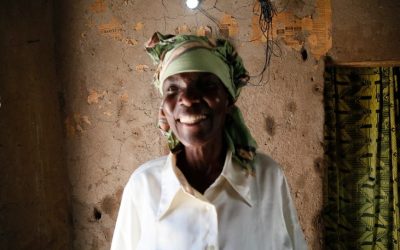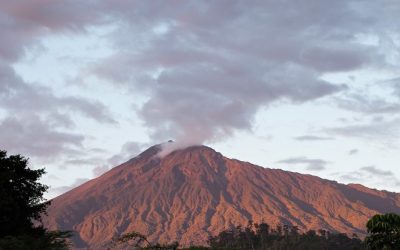Historical Significance of Kilwa
Kilwa, Tanzania, holds a prominent place in history as a thriving trading city on the East African coast. Once part of the powerful Swahili city-states, it was a key hub for commerce, especially in gold, ivory, and slaves, connecting Africa with the Middle East and Asia. The city’s impressive ruins and medieval architecture reflect its rich cultural heritage and significance in the Indian Ocean trade network. Today, Kilwa’s historical sites are recognized as a UNESCO World Heritage Site, celebrating its role in shaping regional history and intercultural exchange.
Origins and Early History
Kilwa, located on the southern coast of present-day Tanzania, holds a significant place in history as a thriving medieval trading city. Its origins trace back to the 9th century, when it emerged as a key center for commerce between Africa, the Middle East, and Asia. The city’s strategic position along the Indian Ocean facilitated the exchange of gold, ivory, and other valuable goods, contributing to its prosperity. Early Kilwa was part of a network of Swahili city-states that flourished through maritime trade, establishing it as an important hub in the Indian Ocean trade routes. The growth of Kilwa’s wealth and influence was also marked by the construction of impressive fortifications and mosques, exemplifying its cultural and economic importance during the medieval period. As a significant center of Islamic culture and trade, Kilwa played a crucial role in shaping the history and development of the East African coast.
Role in the Swahili Coast
Kilwa, located in Tanzania, holds a profound historical significance as a key center of trade and cultural exchange along the Swahili Coast. It was once a prominent city-state that played a vital role in the Indian Ocean trade network, connecting Africa with Asia, the Middle East, and beyond. The city’s strategic position enabled it to thrive economically and culturally for centuries, making it a crucial hub for the dissemination of Islamic culture and commerce.
- Economic Hub: Kilwa was a major trading port, known for the export of gold, ivory, and slaves, which contributed significantly to its wealth and influence.
- Cultural and Religious Center: The city was instrumental in spreading Islam along the East African coast, evidenced by its impressive mosques and Islamic architecture.
- Architectural Heritage: Kilwa is renowned for its historic ruins, including the Kilwa Kisiwani and Songo Mnara, which are UNESCO World Heritage Sites exemplifying Swahili architecture and urban planning.
- Political Power: As a dominant city-state, Kilwa exercised regional power over surrounding islands and coastal settlements during the medieval period.
- Historical Legacy: The decline of Kilwa in the 16th century marked the shift of trade routes and the rise of other East African trading centers, but its legacy endures through archaeological findings and cultural heritage.
Influence of Arab and Persian Traders
Kilwa, located on the southern coast of Tanzania, holds a profound historical significance as a major trading hub in East Africa during the medieval period. Its strategic position facilitated the exchange of goods, culture, and ideas between Africa, the Arab world, and Persia, making it a vital center of commerce and cultural development. The influence of Arab and Persian traders is evident in Kilwa’s architecture, especially the grand stone walls and mosques, and in its booming trade networks that extended across the Indian Ocean. These traders introduced Islam, which became a dominant religion in the region, shaping Kilwa’s social and political landscape. The fusion of African, Arab, and Persian cultures contributed to Kilwa’s prosperity and left a lasting legacy that is reflected in its historical sites today. Kilwa’s significance waned with the rise of European exploration, but its historical role as a melting pot of civilizations remains an important chapter in African and maritime history.
Decline and Colonial Era
Kilwa, Tanzania, holds a remarkable historical significance as a major port and trading hub along the East African coast from the 9th to the 16th centuries. It was central to the Indian Ocean trade network, facilitating commerce between Africa, the Middle East, India, and beyond. The city was renowned for its wealth, skilled craftsmanship, and impressive architecture, including the famous Husuni Kubwa palace and other stone structures that exemplify Swahili culture and Islamic influence.
The decline of Kilwa began in the late 15th century due to a combination of factors such as Portuguese invasion, shifting trade routes, and internal upheavals. In 1505, Portuguese forces captured the city, marking the start of a period of decline as their control disrupted established trade practices. Over time, Kilwa lost its prominence to other emerging coastal towns and trading centers, eventually leading to its decline as a major political and commercial hub.
During the colonial era, Kilwa’s importance diminished further under German and British rule. The establishment of colonial boundaries and the development of new ports shifted trade activities away from Kilwa, reducing its significance. Today, the archaeological sites of Kilwa remain as a testament to its glorious past, illustrating the rich history of Swahili civilization and its role in regional and global trade networks during the medieval period.
Geography and Location
Kilwa, located along the southeastern coast of Tanzania, is a historic town renowned for its rich cultural heritage and strategic geographical position. Its location by the Indian Ocean has historically made it a vital hub for trade and exploration. Understanding the geography and placement of Kilwa provides insight into its significance in regional history and economic development.
Position along the Indian Ocean
Kilwa, Tanzania, is a historic coastal city situated along the eastern edge of Africa, directly facing the Indian Ocean. Its strategic location along the Indian Ocean has made it a significant center for trade and cultural exchange for centuries. The city lies approximately 300 kilometers south of Dar es Salaam, positioned near the southern coast of Tanzania, which provides it with access to maritime routes across the Indian Ocean. This prime location contributed to Kilwa’s prominence in the Indian Ocean trade network, connecting Africa to Arabian, Indian, and Asian merchants. Its position along the coast has also influenced its climate and geography, featuring expansive beaches and coral reefs that enhance its natural beauty and economic activities. Overall, Kilwa’s geographical placement along the Indian Ocean has played a crucial role in its historical development and importance as a trading hub.”
Climate and Terrain

Kilwa, located along the southeastern coast of Tanzania, is situated in a region rich in historical and geographical significance. Its strategic position along the Indian Ocean has made it an important hub for trade and cultural exchange over centuries. The area is characterized by a blend of coastal plains and rugged terrains, with the nearby Zanzibar Archipelago influencing its maritime environment.
The climate of Kilwa is predominantly tropical, with warm temperatures and high humidity throughout the year. It experiences a distinct wet season from November to April, with heavy rains that support lush vegetation, and a dry season from May to October. The coastal climate fosters diverse ecosystems, including coral reefs and mangroves, which are vital for local biodiversity.
The terrain around Kilwa includes low-lying coastal areas, sandy beaches, and some hilly regions inland. The terrain’s combination of flat coastal plains and elevated areas provides a scenic landscape that has historically supported agriculture, fishing, and tourism activities. The natural features of Kilwa contribute to its attractiveness as a destination and its importance in regional ecology.
Natural Resources
Kilwa, located in Tanzania, is a historic coastal town situated along the Indian Ocean. Its geographical position makes it a significant hub for trade and cultural exchange, historically serving as a major port during the medieval period. The town’s proximity to the ocean offers it a strategic advantage for maritime activities and commerce.
- Location: Southeastern coast of Tanzania, along the Indian Ocean
- Coordinates: Approximately 8.89° S latitude and 39.52° E longitude
- Nearby Landmarks: Kilwa Masoko, a key port town; and the UNESCO World Heritage site of Kilwa Kisiwani
Natural resources around Kilwa include rich marine biodiversity, which supports local fishing communities. The region also has access to salt flats and some mineral deposits, although its most notable natural asset is the surrounding ocean, which has historically facilitated trade and resource gathering. The area’s natural environment has played a crucial role in shaping its historical importance and economic activities today.
Architectural Heritage
Kilwa, Tanzania, is a remarkable historical site renowned for its rich architectural heritage. As a former flourishing trade center, Kilwa’s ancient ruins showcase a unique blend of Swahili, Arab, and Portuguese influences, reflecting centuries of cultural exchange. Preserved structures such as the Great Mosque and stone towns highlight the ingenuity and craftsmanship of the region’s past inhabitants. Exploring Kilwa offers a captivating glimpse into East Africa’s vibrant history and its enduring architectural legacy.
Historic Sites and Ruins
Kilwa, Tanzania, is a UNESCO World Heritage Site renowned for its rich architectural heritage, historic sites, and ancient ruins. This coastal town was once a prominent trading center in the Indian Ocean, attracting merchants from Africa, Arabia, Persia, and India. The remnants of Kilwa’s past, including the impressive Kilwa Kisiwani ruins, showcase a blend of Swahili, Islamic, and Arab influences reflected in its mosques, palaces, and fortifications. The architecture exemplifies the grandeur of medieval Swahili civilization, with intricate stonework, vaulted structures, and coral stone buildings that have withstood centuries of exposure to the sea. Exploring Kilwa’s historic sites offers a glimpse into its significance as a hub of trade, culture, and diplomacy in the Indian Ocean region, preserving its legacy as an enduring symbol of East African architectural heritage.
Great Mosque of Kilwa
The Great Mosque of Kilwa, located in Kilwa, Tanzania, is a remarkable example of medieval Islamic architecture and an important part of the region’s rich cultural heritage. Built in the 12th century, it stands as one of the oldest mosques along the East African coast and reflects the historical influence of Indian Ocean trade connections. The mosque’s design features simple but elegant stonework, with a large prayer hall, a mihrab indicating the qibla, and remnants of intricate carvings that highlight the craftsmanship of its builders. As a UNESCO World Heritage site, the Great Mosque of Kilwa symbolizes the cultural and religious significance of Islamic traditions in Tanzania and the broader Swahili coast. Preservation efforts continue to ensure that this architectural heritage remains a testament to the region’s history of commerce, faith, and cultural exchange.
Kilwa Palace and Forts
Kilwa, Tanzania, is renowned for its rich architectural heritage, which reflects a vibrant history of trade, cultural exchanges, and Islamic influence. Among its most prominent sites are the Kilwa Palace and the ancient forts, which stand as monuments of historical significance and architectural ingenuity. The Kilwa Palace, once a grand seat of power for the sultanate, showcases intricate stonework, impressive arches, and spacious courtyards that highlight the skill of its builders. The forts, including the iconic Songo Mnara and Ras Siya Sandstone Fort, served as defensive structures protecting the city from invasions and raiders. These forts feature massive stone walls, watchtowers, and gateways that demonstrate advanced military architecture of their time. Together, these sites offer invaluable insights into the history of Swahili civilization and its maritime dominance along the East African coast. Preservation of Kilwa’s architectural heritage remains crucial for understanding the cultural and historical evolution of Tanzania and the Indian Ocean region.
Conservation Efforts
Kilwa, Tanzania, is a UNESCO World Heritage Site renowned for its rich architectural heritage and historical significance as a thriving Swahili port city. Preservation and conservation efforts aim to protect its ancient ruins, mosques, and city walls, which reflect a blend of Islamic and African influences. These initiatives are vital in maintaining the site’s authenticity and cultural legacy for future generations.
- Restoration projects focus on stabilizing and repairing stone structures, including the famous Great Mosque of Kilwa.
- Local and international agencies collaborate to develop sustainable tourism that benefits the community while preserving heritage sites.
- Educational programs raise awareness among residents and visitors about the importance of conserving Kilwa’s architectural history.
- Archaeological excavations continue to uncover artifacts that deepen understanding of Kilwa’s historical importance and aid in conservation planning.
- Traditional building techniques are promoted to ensure restoration work remains authentic and culturally appropriate.
Culture and Society
Kilwa, a historic city in Tanzania, is a captivating example of the rich interplay between culture and society. Its vibrant history as a flourishing port city has shaped the diverse customs, traditions, and social structures of its inhabitants. Exploring Kilwa offers a window into the ways local culture has evolved through centuries of trade, interactions, and cultural exchange in East Africa.
Local Traditions and Customs
Kilwa, Tanzania, is a historical coastal town renowned for its rich cultural heritage and vibrant local traditions. The community here maintains a deep connection to its past, blending Swahili customs with influences from Arab, Persian, and Portuguese traders who once visited the region. Local traditions are reflected in everyday life, from storytelling and music to traditional crafts and ceremonies. The people of Kilwa celebrate their history through festivals that showcase dance, poetry, and cuisine, reinforcing a strong sense of identity and continuity. Respect for elders and community cooperation are fundamental aspects of social life in Kilwa, helping to preserve the unique cultural fabric of this historic coastal society.
Languages Spoken
Kilwa, located in Tanzania, is a historic coastal city known for its rich cultural heritage and vibrant society. It has been a significant center of trade and history for centuries, influenced by various civilizations including Arab, Portuguese, and Swahili cultures. The society in Kilwa reflects a blend of traditional practices and modern influences, with local customs playing an essential role in everyday life. Languages spoken in Kilwa primarily include Swahili, which is the national language of Tanzania, and English, often used for official and educational purposes. The linguistic diversity in Kilwa fosters a unique cultural identity, enabling meaningful communication and cultural exchange among its residents and visitors. Overall, Kilwa’s culture and society are deeply rooted in its historical significance and its ongoing evolution as a vibrant coastal community.
Religious Practices
Kilwa, Tanzania, is a region rich in cultural diversity and deep-rooted religious practices that reflect its historical significance as a center of trade and Islamic influence. The local society is characterized by a blend of traditional customs and Islamic teachings, which shape daily life, social norms, and community events.
Religious practices in Kilwa predominantly revolve around Islam, with mosques serving as key places of worship and community gathering. Islamic festivals such as Eid al-Fitr and Eid al-Adha are celebrated with various rituals, prayers, and communal festivities that strengthen social bonds. Additionally, the influence of indigenous beliefs can often be seen intertwined with Islamic practices, creating a unique cultural tapestry.
Music, dance, and storytelling are integral parts of Kilwa’s cultural expression, often used during religious and social ceremonies to pass down traditions and history. The society values hospitality, respect for elders, and communal cooperation, which are evident in their cultural events and everyday interactions.
Overall, Kilwa’s culture and religious practices showcase a harmonious blend of Islamic faith and local traditions, fostering a resilient community that preserves its heritage while embracing change.
Arts and Crafts
Kilwa, Tanzania, is renowned for its rich cultural heritage and vibrant arts scene that reflect centuries of history and tradition. The local artisans skillfully produce crafts that showcase intricate designs and craftsmanship, connecting the community to its ancestral roots. Arts and crafts in Kilwa serve not only as a means of preserving cultural identity but also as a vital part of the local economy, attracting tourists eager to experience authentic Tanzanian artistry. The society in Kilwa values communal participation, with craft-making often passed down through generations, fostering a deep appreciation for cultural continuity. Overall, Kilwa’s arts and crafts embody the diverse influences and historical significance of the region, making it a compelling destination for those interested in exploring traditional Tanzanian culture.
Economy and Trade
Economy and trade have played a vital role in shaping the development and history of Kilwa, Tanzania. As a historic trading hub situated along the Swahili coast, Kilwa has long been a center for commerce, attracting merchants from distant lands. The region’s strategic location facilitated the exchange of goods such as gold, ivory, and spices, contributing to its prosperity. Today, Kilwa continues to be an important part of Tanzania’s economy, emphasizing the enduring legacy of trade and economic activity in the area.
Historical Trade Networks
Kilwa, Tanzania, was a prominent medieval trading port that played a vital role in the development of historic trade networks along the East African coast. Its strategic location facilitated the exchange of goods, cultures, and ideas between Africa, the Middle East, India, and beyond. As a key hub in the Indian Ocean trade network, Kilwa contributed significantly to regional economic growth and cultural exchange.
- The city was part of the Swahili Coast, known for its wealthy trading city-states that flourished from the 10th to the 15th centuries.
- Trade goods such as gold, ivory, and exotic textiles were exchanged through Kilwa, linking inland Africa with maritime routes.
- Kilwa’s architecture and artifacts reflect a blend of African, Arab, Persian, and Indian influences, highlighting its role in cross-cultural interactions.
- The decline of Kilwa in the 16th century was influenced by changing trade routes and Portuguese encroachment, marking an end to its prominence in regional trade networks.
Current Economic Activities
Kilwa, Tanzania, is a region with a growing economy primarily driven by agriculture, tourism, and small-scale trade activities. The area benefits from its historical significance as a UNESCO World Heritage Site, attracting numerous visitors and fostering the local hospitality industry. Agriculture remains a vital economic activity, with residents cultivating crops such as maize, cassava, and vegetables for both local consumption and market sale. Small businesses and markets play an essential role in facilitating regional trade, allowing farmers and artisans to sell their products locally and beyond. Additionally, efforts to improve infrastructure and attract investment are gradually enhancing economic activities in Kilwa, promising further development in the near future.
Fishing Industry
Kilwa, Tanzania, has a rich history rooted in trade and commerce, with the local economy historically benefiting from its strategic coastal location. The fishing industry plays a vital role in the livelihoods of many residents, providing both sustenance and income through small-scale and commercial fishing activities. Fisheries in Kilwa are abundant due to its proximity to the Indian Ocean, supporting local markets and contributing to regional trade. Additionally, Kilwa’s economy benefits from the tourism sector, driven by its historic sites, which attract visitors interested in exploring its maritime heritage and archaeological ruins. Efforts to enhance sustainable fishing practices and improve trade infrastructure are crucial for fostering economic growth in the region. Overall, Kilwa’s economy is closely tied to its maritime resources, emphasizing the importance of sustainable development and trade expansion to ensure long-term prosperity.
Agriculture and Livestock
Kilwa, Tanzania, is a region with a rich history rooted in trade, agriculture, and livestock. Its strategic coastal location made it a vital hub for commerce in East Africa, influencing its economic development over centuries.
- Economy and Trade:
- Historically, Kilwa was part of the famous Kilwa Sultanate, serving as a major trading center for gold, ivory, and slaves.
- Today, trade continues to play a significant role, with local markets trading in fish, agricultural produce, and craft goods.
- The region benefits from its port facilities, facilitating regional and international commerce.
- Agriculture:
- The economy of Kilwa largely depends on agriculture, with crops such as cassava, maize, millet, and rice cultivated extensively.
- Farming is mainly small-scale, with many households engaged in subsistence farming to support their livelihoods.
- Climate and soil conditions influence agricultural practices, with efforts ongoing to improve productivity and diversification.
- Livestock:
- Livestock farming, including cattle, goats, and sheep, is a vital supplement to agricultural activities in Kilwa.
- Animals are raised primarily for local consumption, with some surplus sold in markets to generate income.
- Challenges faced include disease management, access to veterinary services, and pasture availability.
Tourism in Kilwa
Kilwa, a historic city on the southern coast of Tanzania, is renowned for its rich cultural heritage and stunning coastal scenery. As part of the UNESCO World Heritage Site, Kilwa offers travelers a unique glimpse into medieval Swahili history, with its well-preserved ruins and vibrant local traditions. Visitors to Kilwa can enjoy a diverse range of tourism experiences, from exploring ancient archeological sites to relaxing on pristine beaches.
Major Tourist Attractions
Kilwa, Tanzania, is a historic coastal town renowned for its rich cultural heritage and stunning architecture. It is an ideal destination for travelers interested in exploring Africa’s Swahili coast and its ancient trading history. Visitors to Kilwa can enjoy a blend of historical exploration, scenic beaches, and vibrant local culture.
Major Tourist Attractions in Kilwa
- Kilwa Kisiwani Ruins: The UNESCO World Heritage Site features ancient Swahili city ruins, including mosques, palaces, and fortifications that date back to the 13th century.
- Kilwa Fort: An impressive historical fortress offering panoramic views of the Indian Ocean and insights into the region’s past.
- Old Mosque: One of the oldest religious structures in East Africa, showcasing traditional Swahili architecture.
- Msimbati Beach: Pristine beaches perfect for relaxing, swimming, and water sports amid breathtaking coastal scenery.
- Likumbi Mosque: A notable religious site with unique architectural features and cultural significance.
- Local Markets: Vibrant markets where visitors can experience local culture, buy handmade crafts, and taste traditional Swahili cuisine.
Travel Infrastructure
Tourism in Kilwa, Tanzania, is growing as visitors are attracted to its rich historical heritage and stunning coastal scenery. The region boasts a collection of ancient ruin sites, including the famous Kilwa Kisiwani, a UNESCO World Heritage Site that offers a glimpse into the historic Swahili culture and trade history. The captivating beaches and clear Indian Ocean waters make Kilwa a popular destination for beach lovers and underwater enthusiasts alike.
Travel infrastructure in Kilwa is gradually improving to support increased tourism. There are basic transportation options such as local buses and ferries that connect Kilwa to other parts of Tanzania. While road conditions can vary, efforts are ongoing to upgrade the primary routes to enhance accessibility. The availability of guesthouses, small hotels, and local accommodations provides options for travelers to stay comfortably while exploring the region. Despite some infrastructural challenges, Kilwa remains a promising destination for those seeking cultural enrichment and natural beauty in Tanzania.
Visitor Experience and Cultural Tours
Tourism in Kilwa, Tanzania offers visitors a unique opportunity to explore the rich history and vibrant culture of the region. Known for its stunning coastal scenery and historical significance, Kilwa attracts travelers seeking an authentic experience of East African heritage.
Visitors to Kilwa can enjoy a variety of experiences, including exploring ancient ruins, relaxing on pristine beaches, and engaging with local communities. The town’s historical sites, such as the Kilwa Kisiwani UNESCO World Heritage Site, provide insight into the ancient Swahili civilization and its maritime prowess.
Cultural tours in Kilwa are a highlight for many travelers, offering immersive experiences into the local customs, traditions, and everyday life. Guided tours often include visits to traditional markets, craft villages, and local fishing communities, providing a deeper understanding of the region’s cultural fabric.
Overall, Kilwa presents an enriching destination where history, culture, and natural beauty combine to create memorable travel experiences for all visitors.
Challenges and Opportunities in Tourism Development
Kilwa, located along the southern coast of Tanzania, is renowned for its rich historical heritage and natural beauty, making it an attractive destination for tourists. The town boasts the UNESCO World Heritage Site of Kilwa Kisiwani, with its ancient Swahili ruins, mosques, and coral stone structures that attract history enthusiasts from around the world. Additionally, its pristine beaches and vibrant marine life offer excellent opportunities for eco-tourism and water-based activities.
Despite its potential, Kilwa faces several challenges in tourism development. Infrastructure limitations, including poor transportation networks and inadequate accommodation facilities, hinder accessibility and visitor comfort. Moreover, limited marketing and awareness about Kilwa’s attractions restrict its ability to compete with more established Tanzanian tourist destinations. Environmental concerns, such as coastal erosion and coral reef degradation, also threaten the sustainability of tourism in the area.
However, there are significant opportunities to boost tourism in Kilwa. Investing in infrastructure development and promoting eco-friendly practices can enhance visitor experiences while preserving natural and cultural resources. Capacity building and marketing strategies can increase international awareness and attract more tourists. Additionally, community-based tourism initiatives can empower local residents, generate employment, and ensure that tourism benefits are equitably distributed, contributing to the sustainable growth of Kilwa’s tourism sector.





0 Comments